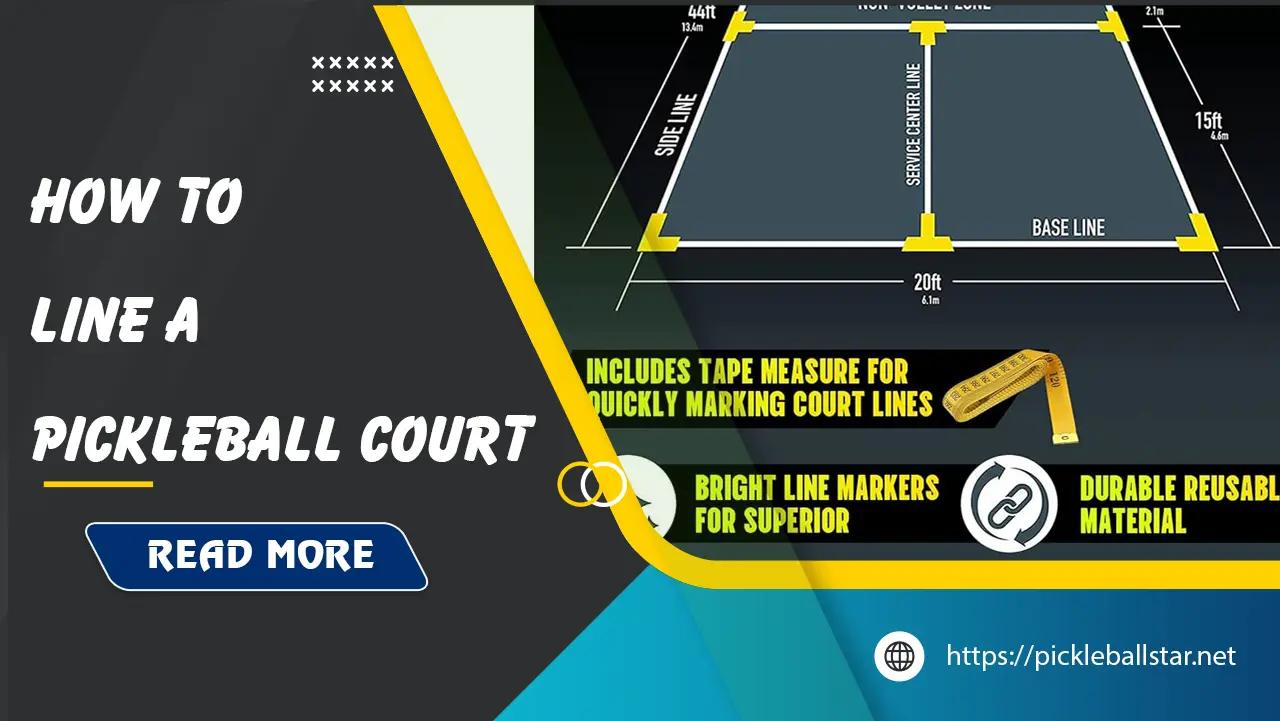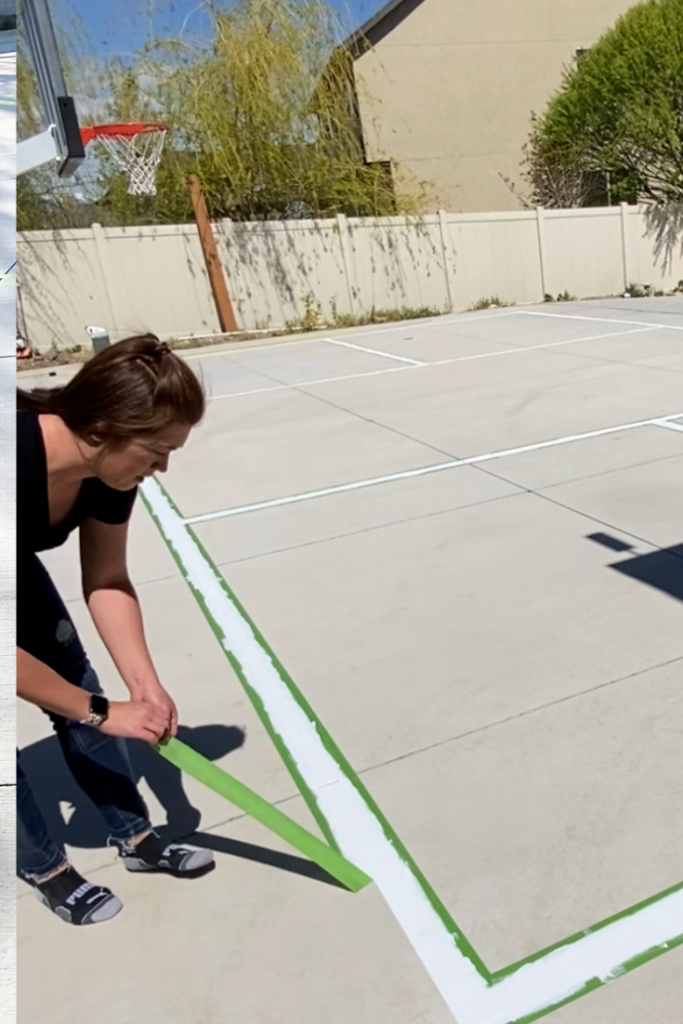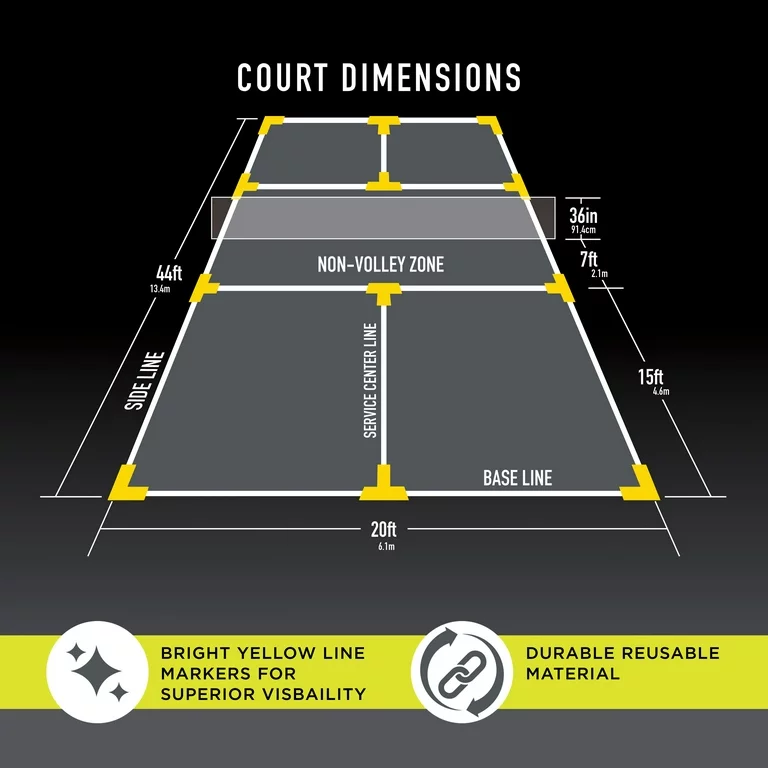How to Line a Pickleball Court: A Comprehensive Guide
Pickleball, a sport that has taken the world by storm, requires precision not just in gameplay, but also in its court setup. Properly lining a pickleball court is paramount to ensure fair play, adherence to rules, and overall player satisfaction. Incorrectly lined courts can lead to disputes, confused play, and even penalties in official matches. Just like the boundaries in a game of chess define the strategy and move possibilities, court lines in pickleball are the silent guides that inform players on where to stand, how to serve, and where to aim their shots. In essence, correctly marking your pickleball court is akin to setting the stage for a grand play, where each actor knows their role and positioning, resulting in a seamless and enjoyable experience. This guide will delve deep into the nitty-gritty of how to line a pickleball court, from gathering the right materials to ensuring perfect measurement and accuracy.

Gather Your Materials
Before you embark on your court-marking journey, arm yourself with the right tools and materials. The choice of marking tools can vary based on several factors:
- Alternative Marking Tools: If traditional spray paint is not available, numerous alternatives can do the job equally well. Consider chalk, which offers a temporary marking solution, or durable masking tape for a more permanent option. Specialty court-marking paint is also available, designed specifically for sports surfaces, offering longevity and visibility.
- Choosing the Right Tools: The surface of the court plays a significant role in determining the type of marking tools to use. For rough, asphalt surfaces, durable marking paint or tape may be ideal. For smoother surfaces, chalk or temporary markers might suffice. Ensure the tools you select are weather-resistant if your court is outdoors.
- Safety Precautions: When using spray paint or any other chemical-based marking tool, it’s essential to follow safety guidelines. Wear safety goggles, gloves, and masks to avoid inhaling fumes. Additionally, ensure the area is well-ventilated and free of obstacles to prevent tripping or other accidents.

Determine Your Court Type
Understanding the type of court you’re lining is crucial as the dimensions vary for singles and doubles play:
- Different Sizes for Doubles and Singles: Pickleball courts are generally the same size for both singles and doubles, measuring 20 feet by 44 feet. However, understanding the court layout for both can influence how you mark the non-volley zones and service areas.
- Specific Dimensions: A standard pickleball court measures 20 feet in width and 44 feet in length, with a net dividing it into two equal halves. The non-volley zone, often referred to as the “kitchen,” extends 7 feet from each side of the net.
- Strategic Play Insights: The dimensions of the pickleball court directly affect strategies and tactics. For instance, the compact size encourages faster reflexes and strategic positioning. The non-volley zone emphasizes precise shot placement rather than power, adding a layer of strategy to the game.
Mark the Baseline

The baseline forms the backbone of your pickleball court:
- Ensuring Straight Lines: A straight baseline ensures the integrity of the court. Use string and chalk to mark a guideline. A tape measure is essential to ensure the baseline is the correct length.
- Using a Level: To create a perfectly straight baseline, use a carpenter’s level alongside your chalk line. This ensures that the line is both straight and even, a critical aspect for fair play.
- Common Mistakes: One frequent mistake is not double-checking measurements. Always verify distances multiple times before marking permanently. Another pitfall is marking lines in an uneven or sloped area, leading to inaccurate play dimensions.
Read more: Pickleball court cost
Mark the Sidelines
Sidelines delineate the playing area, requiring accuracy and parallel alignment:
- Techniques for Straight Lines: Like the baseline, use string and chalk to outline the sidelines. Employ a second pair of hands to hold the string taut for straight lines.
- Ensuring Correct Distance: Sidelines should be equidistant from the net. Use a tape measure to confirm this. The width of the court should consistently measure 20 feet from the inside edge of each sideline.
- Double-Checking Parallel Lines: After marking, measure the distance at several points between the sidelines to ensure they are parallel. Any inconsistencies can be corrected before making marks permanent.
Mark the Net
Positioning the net is crucial for fair play and game integrity:
- Net Positioning Tips: Place the net in the center of the court, ensuring an equal playing area on both sides. Measure from the baselines to the center to confirm its correct placement.
- Anchoring the Net: Secure the net to ensure it remains taut. Anchor it to the ground or court boundaries using net posts. The net should be horizontally tight and vertically at the regulation height of 36 inches at the sidelines and 34 inches at the center.
- Net Regulations: According to official guidelines, the net must maintain a height of 34 inches at the center and 36 inches at the posts. This ensures uniformity and fairness in play.
Mark the Non-Volley Zone
The non-volley zone, or “kitchen,” plays a pivotal role in pickleball:
- Creating Clear Lines: Use bright, permanent markers or paint to demarcate the non-volley zone clearly. Ensure the line extends 7 feet from the net on either side and runs parallel to it.
- Avoiding Common Mistakes: Do not compromise the accuracy of the non-volley line. Incorrect measurement can lead to disputes and affect gameplay drastically. Always triple-check your measurements.
- Ensuring Correct Depth: Measure 7 feet from the net into the court on both sides to establish the non-volley zone. Double-check by measuring diagonally from each corner.
Additional Considerations
Enhance your court’s functionality beyond basic lines:
- Adding a Center Line: A centerline can assist with accurate service placement and ensure serves land within the correct service box. It runs perpendicular to the net through the center of the court.
- Visibility of Court Lines: Opt for bright, contrasting colors for court lines. Ensure they are visible from all angles, including low-light conditions. Regular maintenance, like repainting faded lines, is essential.
- Maintenance and Protection: Protect your court lines with a thin layer of clear sealant to prolong their life. Clean the court regularly to remove dirt and debris that may obscure the lines.
Read more: Pickleball court lighting
Conclusion
Lining a pickleball court correctly is both an art and a science, requiring meticulous attention to detail and adherence to official dimensions. The most crucial takeaway is to ensure every line from the baseline to the non-volley zone is measured accurately and marked clearly. This not only enhances the playing experience but also maintains the integrity of the game. By following the steps outlined in this guide, you can ensure your pickleball court meets all official regulations, providing a professional and enjoyable playing surface.
For further assistance, numerous resources and organizations, such as the USA Pickleball Association (USAPA), offer detailed guides and support. Remember, a well-lined court is the foundation of a fair and enjoyable game of pickleball.
